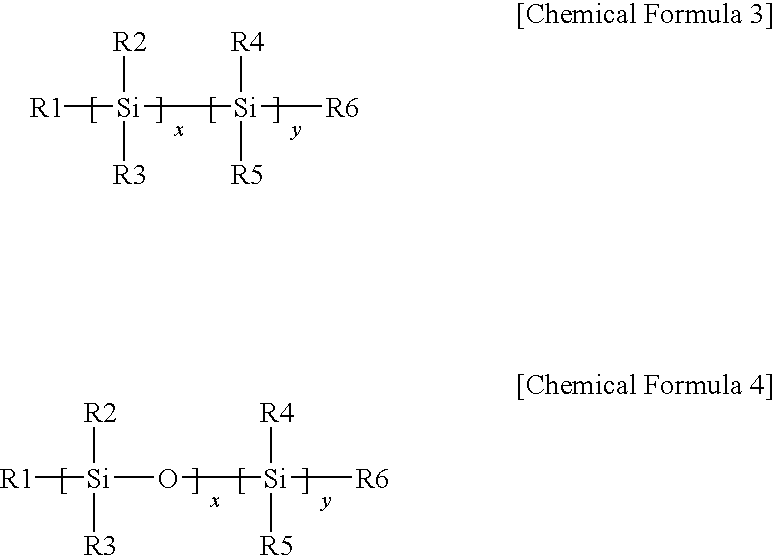Branched (Meth)acrylate Copolymer with High Refractive Index and Method for Preparing the Same
a technology of branched methacrylate and copolymer, which is applied in the direction of coatings, etc., can solve the problems of difficult to impart sufficient flame retardancy to polymethyl methacrylate using conventional flame retardants, and difficult to use an alloy of pc and pmma in the housing of electrical and electronic products, etc., to achieve high colorability and high transparency
- Summary
- Abstract
- Description
- Claims
- Application Information
AI Technical Summary
Benefits of technology
Problems solved by technology
Method used
Image
Examples
example 1
[0064]To a monomer mixture comprising 40 parts by weight of phenyl methacrylate, 40 parts by weight of cyclohexyl methacrylate, 17 parts by weight of methyl methacrylate, 2.5 parts by weight of methylacrylate, and 0.5 parts by weight of divinyltetramethyldisiloxane are added 0.3 parts by weight of lauroyl peroxide and 0.31 parts by weight of normal-octyl mercaptan, and the monomer mixture is stirred to form a homogeneous mixture.
[0065]Disodium hydrogen phosphate and sodium sulfate as suspension stabilization aids are dissolved in 110 parts by weight of ion exchanged water in a stainless steel high-pressure reactor having stirring equipment, and 0.15 parts by weight of polyethylacrylate-methylacrylic acid with a molecular weight of 1,000,000 or more as a suspension stabilizer is added thereto and stirred. To the aqueous solution in which the suspension stabilizer is dissolved is added the monomer mixture and stirred intensively while purging the reactor with an inert gas such as nitr...
example 2
[0066]Example 2 is conducted in the same manner as in Example 1 except a monomer mixture comprising 40 parts by weight of phenyl methacrylate, 57 parts by weight of cyclohexyl methacrylate, 2.5 parts by weight of methylacrylate, and 0.5 parts by weight of divinyltetramethyldisiloxane are used.
example 3
[0067]Example 3 is conducted in the same manner as in Example 1 except a monomer mixture comprising 40 parts by weight of benzyl methacrylate, 40 parts by weight of cyclohexyl methacrylate, 17 parts by weight of methyl methacrylate, 2.5 parts by weight of methylacrylate, and 0.5 parts by weight of divinyltetramethyldisiloxane is used.
PUM
| Property | Measurement | Unit |
|---|---|---|
| Temperature | aaaaa | aaaaa |
| Percent by mass | aaaaa | aaaaa |
| Percent by mass | aaaaa | aaaaa |
Abstract
Description
Claims
Application Information
 Login to View More
Login to View More - R&D
- Intellectual Property
- Life Sciences
- Materials
- Tech Scout
- Unparalleled Data Quality
- Higher Quality Content
- 60% Fewer Hallucinations
Browse by: Latest US Patents, China's latest patents, Technical Efficacy Thesaurus, Application Domain, Technology Topic, Popular Technical Reports.
© 2025 PatSnap. All rights reserved.Legal|Privacy policy|Modern Slavery Act Transparency Statement|Sitemap|About US| Contact US: help@patsnap.com



